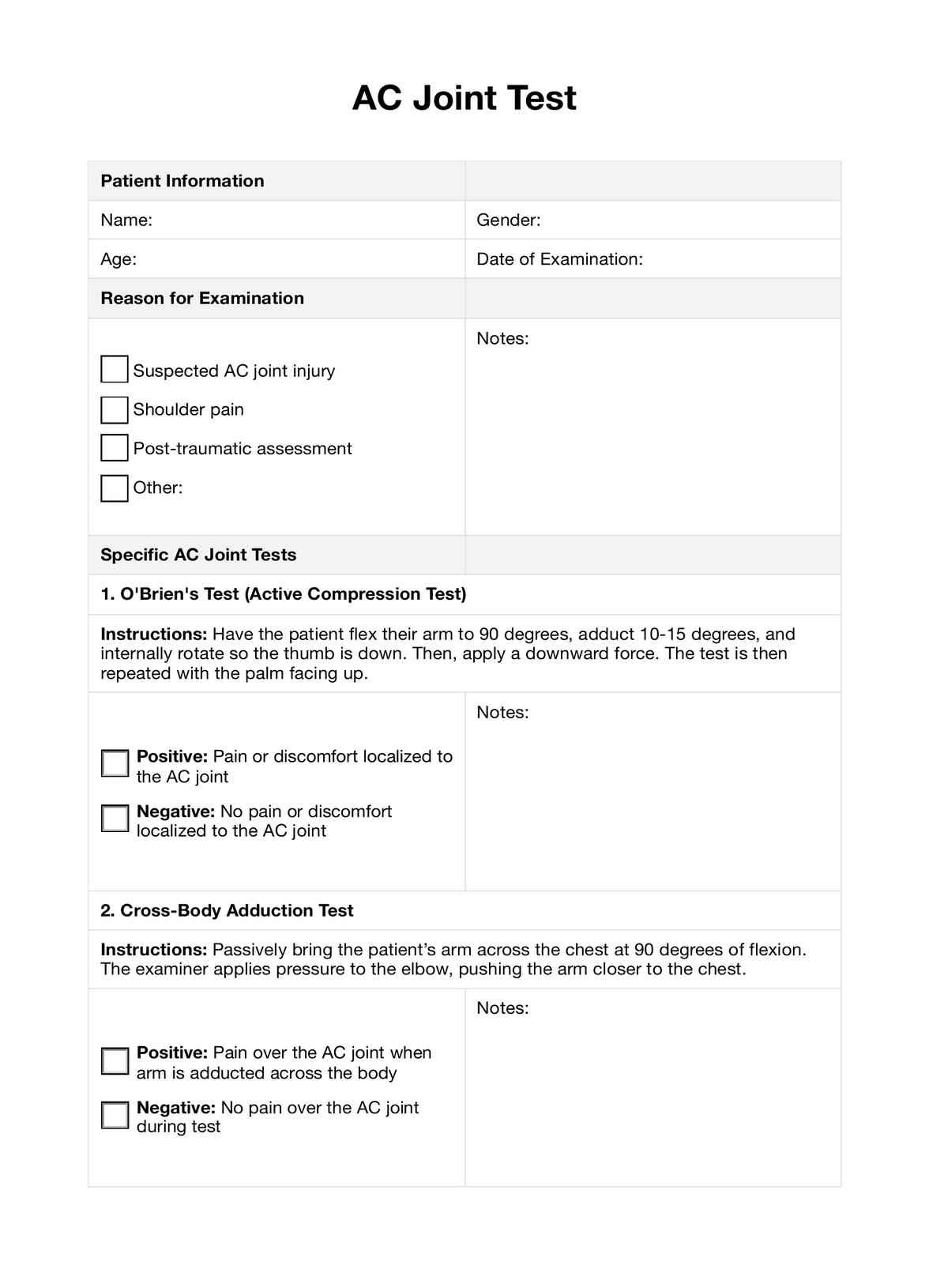AC joint injuries are typically diagnosed through a thorough physical examination and history. Key signs include localized pain at the AC joint at the top of the shoulder, tenderness over the joint when palpated, pain with cross-body adduction, and visible deformity or step-off if a complete tear is present.

AC Joint Test
Explore AC Joint Test procedures, results interpretation, and next steps for managing injuries like AC joint separation and arthritis.
AC Joint Test Template
Commonly asked questions
The scarf test, also known as the bear hug test, is used to assess AC joint pain and instability by having the patient place their hand on the opposite shoulder with the elbow pointing up, at which point the examiner applies a downward force on the elbow, with pain localized to the AC joint indicating a positive test and potential AC joint pathology.
The AC joint compression test involves the examiner applying direct pressure over the AC joint while palpating for tenderness or instability. Pain or apprehension during compression signifies a positive test and potential AC joint injury.
EHR and practice management software
Get started for free
*No credit card required
Free
$0/usd
Unlimited clients
Telehealth
1GB of storage
Client portal text
Automated billing and online payments











